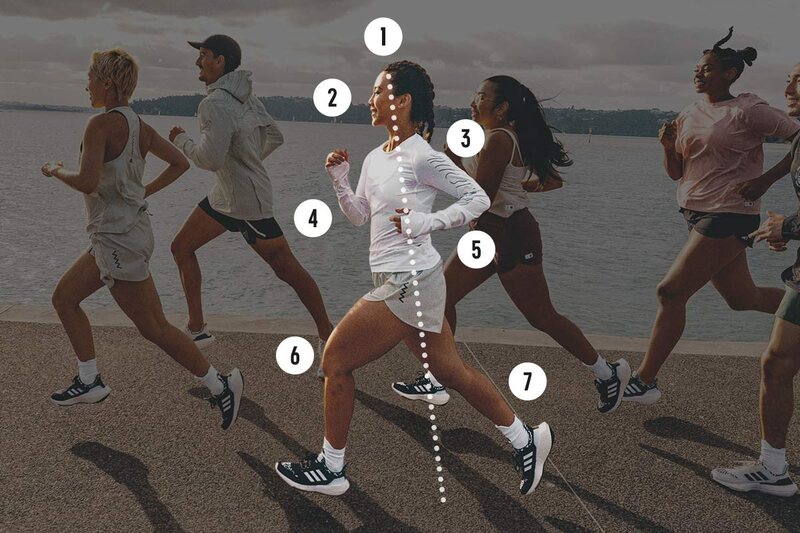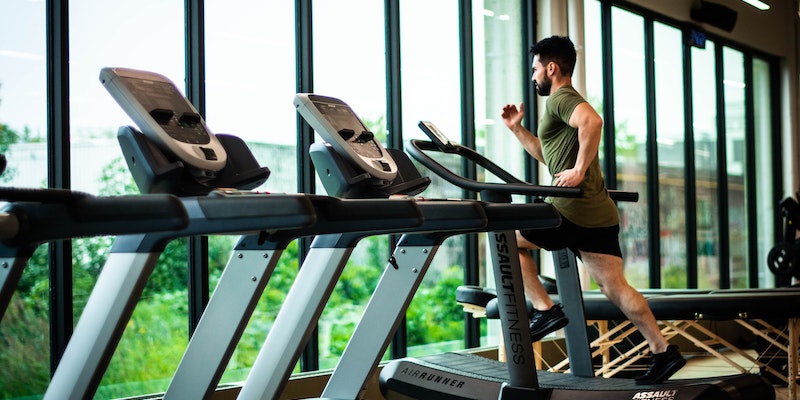Putting the Knowledge About Running All Together
Nov 30, 2023 By Madison Evans
Embarking on a running journey can potentially transform your fitness and health significantly. Whether the goal is shedding pounds, enhancing cardiovascular wellness, or relishing nature's splendor, running serves as an accessible yet potent strategy to attain these objectives. This guide delves into the fundamental basics of running. Additionally, it provides pragmatic tips for beginners and vital aids in jumpstarting your routine.

Getting Started: A Beginner's Guide
Before hitting the pavement, you must grasp the basics of running. Selecting appropriate gear and comprehending the correct form is an understanding that is essential for setting realistic fitness goals at your level. Now, let’s walk you through the elements required to begin a successful journey with running.
Selecting the Right Running Gear
A careful selection of running gear significantly enhances performance, prevents injuries, and ensures comfort. This discussion provides an extensive examination of each aspect crucial for choosing appropriate running gear:
Running Shoes: The Foundation of Your Gear
Prioritizing investment in a quality pair of running shoes is crucial. Your choice is capable of either enhancing or detracting from your running experience. Therefore, it should not be taken lightly. Seek out shoes that provide appropriate support and cushioning: factors to consider include arch type, foot shape, and pronation.
For a professional fitting that will help you find the shoes tailored to your individual needs, visit a specialty running store. Quality running shoes deliver essential shock absorption, stability, and comfort. This in turn mitigates the risk of foot and leg issues.
Understanding Foot Pronation
Among individuals, foot pronation, the natural inward rolling of the foot during running, varies. The three main types are; neutral pronation, overpronation, and underpronation, also known as supination.
Understanding your specific pronation pattern proves instrumental in selecting shoes that cater to particular needs. Stability shoes offer benefits to overpronators, while a wider range of options is available for neutral runners. Typically, supinators require shoes with extra cushioning.
Socks Matter
Underestimating the significance of high-quality running socks is a mistake. Choose moisture-wicking, breathable options as they mitigate friction and maintain dryness in your feet. Evaluate sock thickness according to running conditions.

For colder weather, opt for thicker socks. Yet during warmer temperatures, select thinner ones. Wearing appropriate socks not only prevents blisters but also amplifies overall foot comfort.
Appropriate Clothing for Comfort and Performance
In addition to appropriate footwear, the selection of suitable clothing is crucial for an enjoyable running experience. Specifically, moisture-wicking fabrics present a significant advantage, particularly in rigorous workouts.
Such materials actively draw sweat from your skin. This action not only maintains dryness but also minimizes chafing risks. Consider the climate of your running environment and look for lightweight, breathable clothing accordingly. Layering is crucial to regulate temperature in colder weather.
Understanding Proper Running Form
Maintaining a successful and injury-free running experience hinges on the foundation of proper running form. This form encompasses body alignment, foot placement, and arm movement in a way that optimizes your biomechanics with each stride.
Here, we present a detailed breakdown of the key elements critical to maintaining an effective running form:
- Upright Posture:
Maintain an upright posture in your body while running. Keep the back straight, relax the shoulders, and fix a forward gaze. A straight posture facilitates efficient breathing. It alleviates strain on your back and enables the engagement of core muscles for stability.
- Foot Placement:
Distribute the impact evenly across your foot by landing with a mid-foot strike during each step. Striking the ground first with your heel can result in heightened stress on both knees and lower back.
It's advisable to avoid this approach. A smoother transition between strides, an action promoted by a mid-foot strike, reduces injury risks significantly.
- Stride Length:
Strive to achieve a natural stride length, one that ensures comfortable leg movement. In doing so, be vigilant against overstriding. Overstriding manifests when your foot lands excessively ahead of your body, and it can result in braking forces. These not only impose unnecessary stress upon joints but also elevate the probability of injuries.
- Cadence:
Maintain a consistent cadence, targeting approximately 170 to 180 steps per minute. This pace, when higher, is typically linked with enhanced running efficiency and diminished impact forces.
Adjust your stride as necessary. Tailor it to your comfort level while maintaining an optimal speed for pacing considerations.
- Arm Movement:
Your stride should synchronize naturally with the swinging of your arms: maintain a 90-degree bend at the elbows, and ensure that arm movement is linear, forward and backward rather than across your body.
Properly coordinated arm movements promote balance. They also enhance propulsion by reducing tension in the upper body.
- Head Position:
Maintain a neutral head position, aligning it with your spine. Avoid excessive tilting, either upward or downward. A well-maintained neutral head posture enhances overall body alignment and diminishes strain on the neck as well as the upper back.

- Breathing Technique:
Develop a breathing pattern that is both rhythmic and controlled. Inhale and exhale steadily, synchronizing each breath with your strides. Bear in mind: that shallow or erratic respiration may engender fatigue and discomfort.
By emphasizing deep, controlled breaths, you not only oxygenate your muscles which is crucial for enhancing endurance, but also contribute to an overall improvement in physical performance.
Beginner Running Tips for Success
Having established a basic understanding of running, we can now explore some actionable beginner's tips. This exploration will ensure not only your success but also make the entire experience more enjoyable.
Start with a Warm-up Routine
Incorporate a dynamic warm-up before each run to ready your muscles for the activity. This may entail light jogging in place, leg swings, and arm circles. The process of warming up escalates blood flow and mitigates injury risks.
Follow a Gradual Progression
Initially, resist the temptation to exert excessive pressure on yourself. Instead, augment your running duration and intensity gradually to provide room for your body's adaptation. By adopting this approach, you reduce the risk of overuse injuries significantly while maintaining high levels of motivation.
Mix in Walking Intervals
Consider incorporating walking intervals into your running routine if you are new to the activity. By alternating between running and walking, you can enhance your stamina while diminishing the overall joint impact.
Stay Hydrated and Nourished
Any runner must prioritize proper hydration and nutrition. It’s especially crucial on longer runs. Ensure your body receives a balanced diet teeming with carbohydrates, proteins, and healthy fats. Moreover, make certain to ingest an ample amount of water.
The Finish Line
In conclusion, initiating a running routine rewards you with improved overall well-being. By concentrating on the fundamentals, incorporating beginner tips, and maintaining commitment to your goals, you will unearth the joy and satisfaction inherent in becoming a runner. Therefore, lace up; hit that pavement–and embrace running's transformative power!
-
 Sep 27, 2023
Sep 27, 2023The 'Weekend Warrior': Achieving Heart Health Benefits through Infrequent Exercise
A "weekend warrior" is someone who works out as hard as they would in a week over the course of two days. Find out more about it in this article.
-
 Sep 26, 2023
Sep 26, 2023Can Sugar Cause Kidney Stones? Find Out!
Do you know added that sugar can cause kidney stones? Find out more about this recent study and take appropriate measures.
-
 Jan 07, 2023
Jan 07, 2023How Can You Tell If You Have A Stomach Ulcer?
An ulcer forms in the stomach or small intestine lining, causing pain and discomfort. Abdominal discomfort, nausea, vomiting, bloating, loss of appetite, and heartburn are all symptoms. Bleeding is a potentially fatal complication of a stomach ulcer. Going to a doctor for a diagnosis and treatment is essential if you think you have a stomach ulcer.
-
 Oct 20, 2023
Oct 20, 2023Understanding and Addressing Intestinal Parasites
This article provides an overview of intestinal parasites, their causes, symptoms, and various treatment options available.
